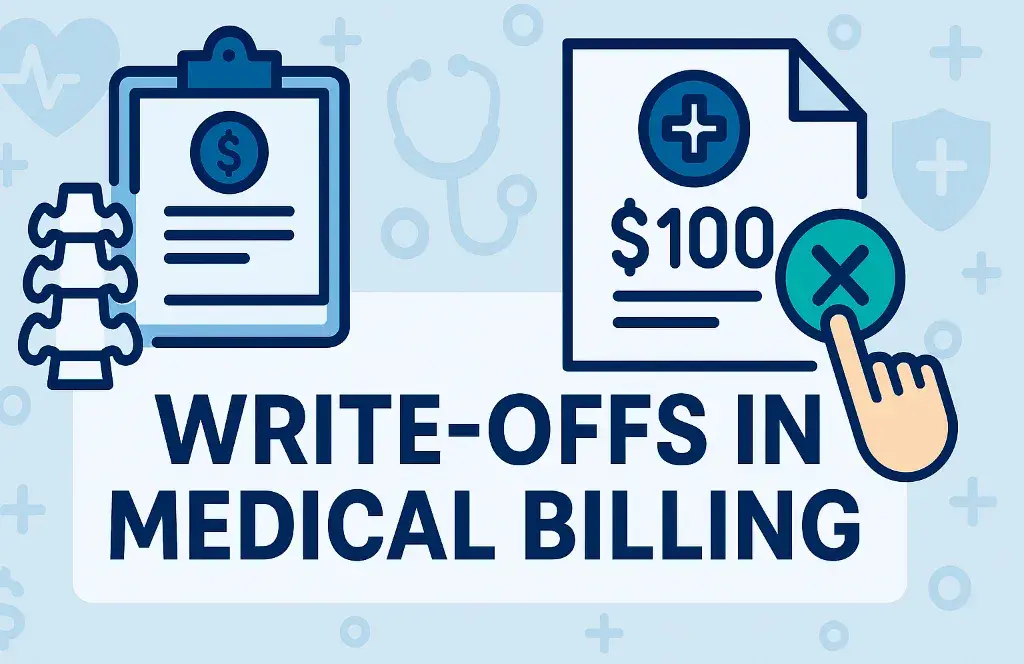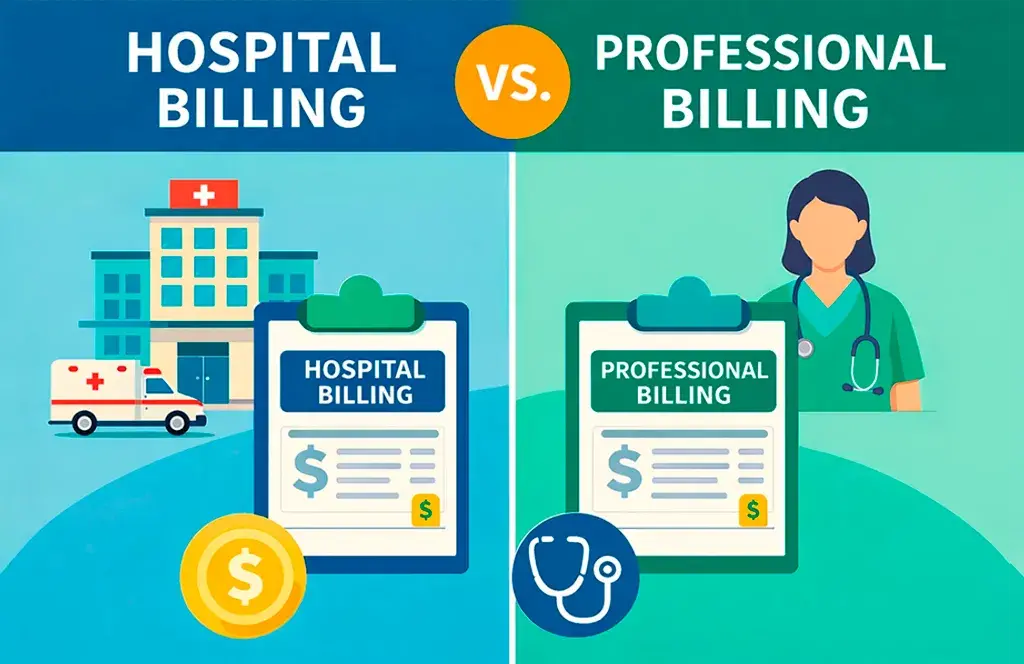Table of Contents
ToggleUnderstanding write-offs is essential for both providers and billing and coding professionals, as mismanagement can significantly impact accurate financial performance. To gain clarity, let’s break down the most common types of write-offs, their causes, and how they differ from adjustments.
Types of Write-Offs in Medical Billing
Providers may write off amounts for many reasons. These reasons can generally be grouped into mandatory write-offs that follow rules or the terms of the contract, and avoidable write-offs that often result from errors or inefficiencies.
Contractual Write-Offs
When providers enter a contract with the insurance company, they agree to specific reimbursement rates for each service. The difference between the provider charges and the allowable fee is recorded as a contractual adjustment. For example, if a service is billed at $500 but the insurer pays $300 as the insurance rate or allowable payment, the $200 difference is a contractual adjustment. This adjustment is a discounted insurance rate or allowable amount and cannot be billed to the patient. A contractual adjustment from the final payment is standard and unavoidable, ensuring compliance per the terms of agreements with insurance companies.
Charity Write-Offs
Charity write-offs apply when providers forgive a portion of the bill due to financial hardship. These write-offs are often tied to official policies of the medical practice that evaluate patient income and eligibility. They not only support access to care for vulnerable populations but also demonstrate a provider’s commitment to serving the community. Documentation is important here to maintain compliance and transparency in reporting.
Small Balance Write-Offs
Sometimes, the cost of pursuing small balances outweighs the payment itself. For example, sending multiple reminders to collect payment of $15 can be more expensive than the amount owed. Small balance write-offs allow providers to avoid unnecessary collection efforts and focus resources on larger claims. Many practices apply these balances to future visits instead of writing them off immediately, balancing efficiency with fairness.
Promotional or Prompt-Pay Write-Offs
To encourage upfront payment from patients and payers, especially uninsured ones, providers may offer prompt-pay discounts. These promotional write-offs forgive a portion of the bill, reduce the risk of chasing payments later, and improve cash flow. For example, a provider may forgive $50 from a $500 charge for a procedure if the patient pays in full at the time of service. This type of write-off is not required but can strategically reduce administrative workload.
Administrative Write-Offs
Administrative write-offs occur due to operational or situational factors. This may include waiving charges after a negative patient experience, removing balances caused by clerical errors, or closing accounts that are no longer active. While they help resolve disputes and maintain patient satisfaction, providers must monitor these write-offs carefully to avoid revenue leakage caused by inefficiencies.
Bad Debt Write-Offs
Bad debt write-offs occur when a provider is unable to collect balances despite repeated attempts. This includes an unpaid balance from a patient or insurance company after calls, reminders, or collection agency referrals. Bad debt write-offs occur as a last resort when amounts are considered uncollectible. Monitoring these cases can help practices adjust internal policies to reduce future risk.
Insurance-Related Write-Offs
Not all write-offs are tied to patient responsibility – some arise when claims are submitted incorrectly or denied. Insurers may deny claims because of coding errors, late filing, or missing documentation. When corrections cannot be made, these amounts may be written off. The most frequent categories include:
- Timely filing write-offs – claims filed after the payer’s submission deadline.
- Uncredentialed provider write-offs – charges denied when the provider is not in-network.
- Coverage denials – services deemed non-covered under the patient’s insurance coverage.
Insurance-related write-offs can often be minimized with strong billing system workflows and proper credentialing.
Difference Between Write-Off and Adjustment in Medical Billing
While write-offs and adjustments are sometimes used interchangeably, they serve different purposes in billing. Both involve changes to the billed amount, but they are not the same. Understanding the difference is essential for compliance and accurate financial reporting.
| Aspect | Write-Off | Adjustment |
|---|---|---|
| Definition | An amount permanently removed because it cannot or should not be collected. | A change to a billed amount for accuracy or reconciliation. |
| Purpose | To comply with payer contracts, account for uncollectible debt, or provide patient assistance. | To correct billing errors, apply discounts, or update account records. |
| Financial Impact | Recorded as a reduction in revenue; reflects a financial loss. | May or may not reduce revenue; ensures billing accuracy. |
| Example | Provider bills $500, insurer allows $300, $200 difference is written off. | Patient incorrectly billed $50 for coinsurance; adjustment corrects it. |
Here, a contractual adjustment is a discounted rate applied based on the contract allows terms. The adjustment from the final payment ensures compliance with insurance agreements.
Why Managing Write Off in Medical Billing Matters
Write-offs are inevitable, but how they are managed can make or break a healthcare organization’s financial health. High levels of unnecessary write-offs often point to inefficiencies, such as poor claims management, missed filing deadlines, or weak financial policies. By contrast, well-managed write-offs support transparency, compliance, and patient trust.
Effective strategies for managing write-offs include:
- Establishing clear policies for charity, copayment, and coinsurance balances.
- Regularly auditing denied claims to reduce administrative errors.
- Ensuring timely claim submission to avoid preventable losses.
- Tracking trends to identify weaknesses in collection efforts.
- Inform patients clearly about insurance coverage, deductible amounts, and payment from a patient responsibilities.
Avoid Unnecessary Losses With Smart Write-Off Strategies
Write-offs in medical billing are more than just financial losses – they are reflections of contractual agreements, policies, and patient care priorities. By distinguishing them from adjustments, providers and the payer can better manage revenue cycles. Proactive management not only minimizes avoidable write-offs but also ensures that practices remain compliant, financially healthy, and patient-centered.
At Swift Medical Billing, we help providers avoid unnecessary losses by minimizing write-offs and optimizing revenue cycles. Start your journey toward fewer denials and healthier cash flow today by getting in touch with us.




